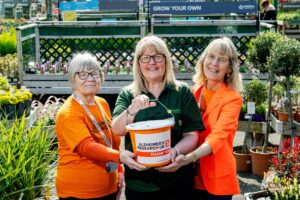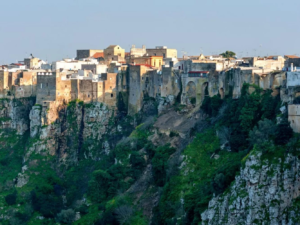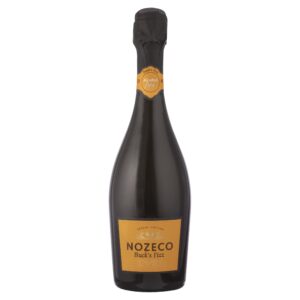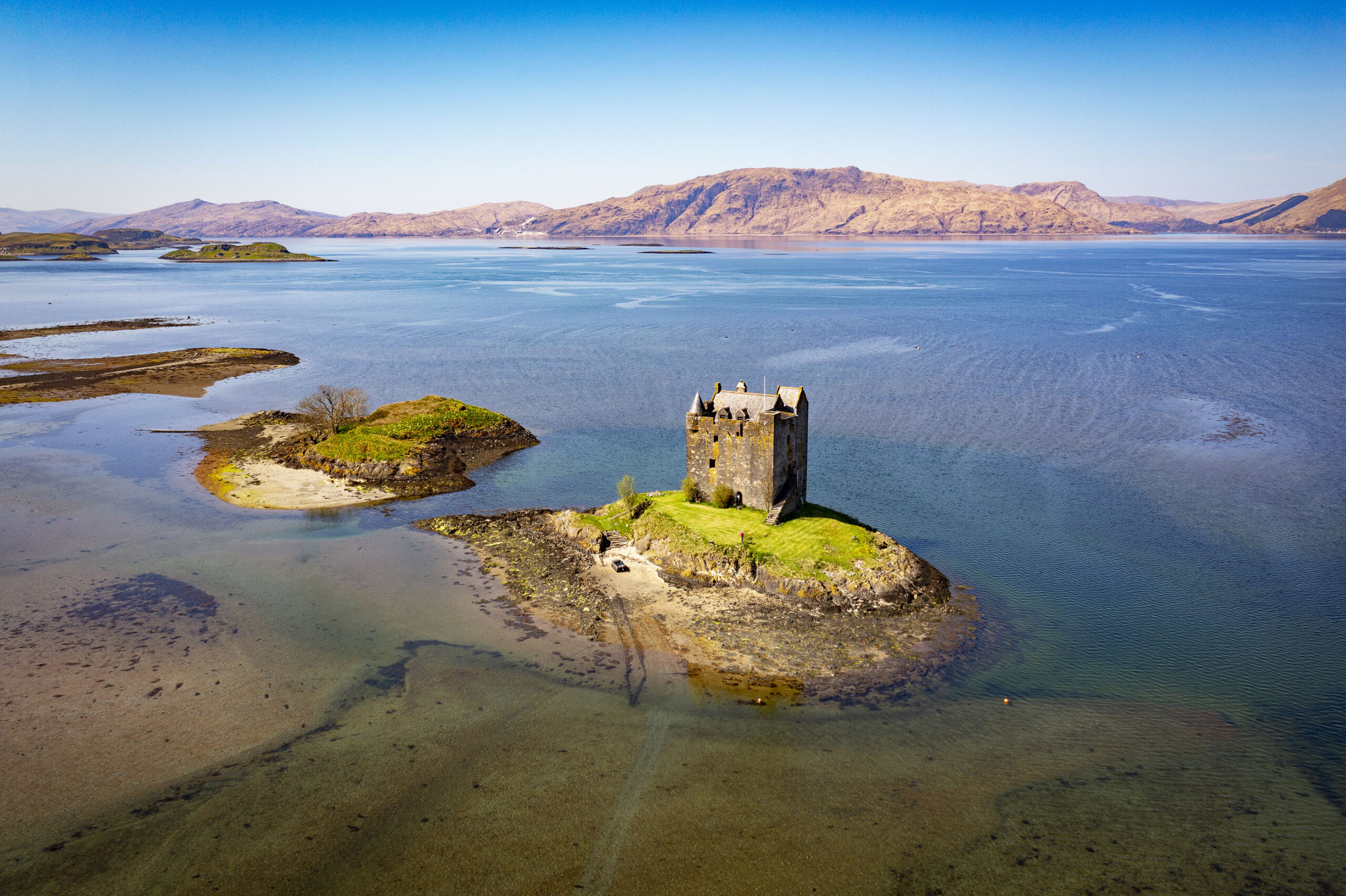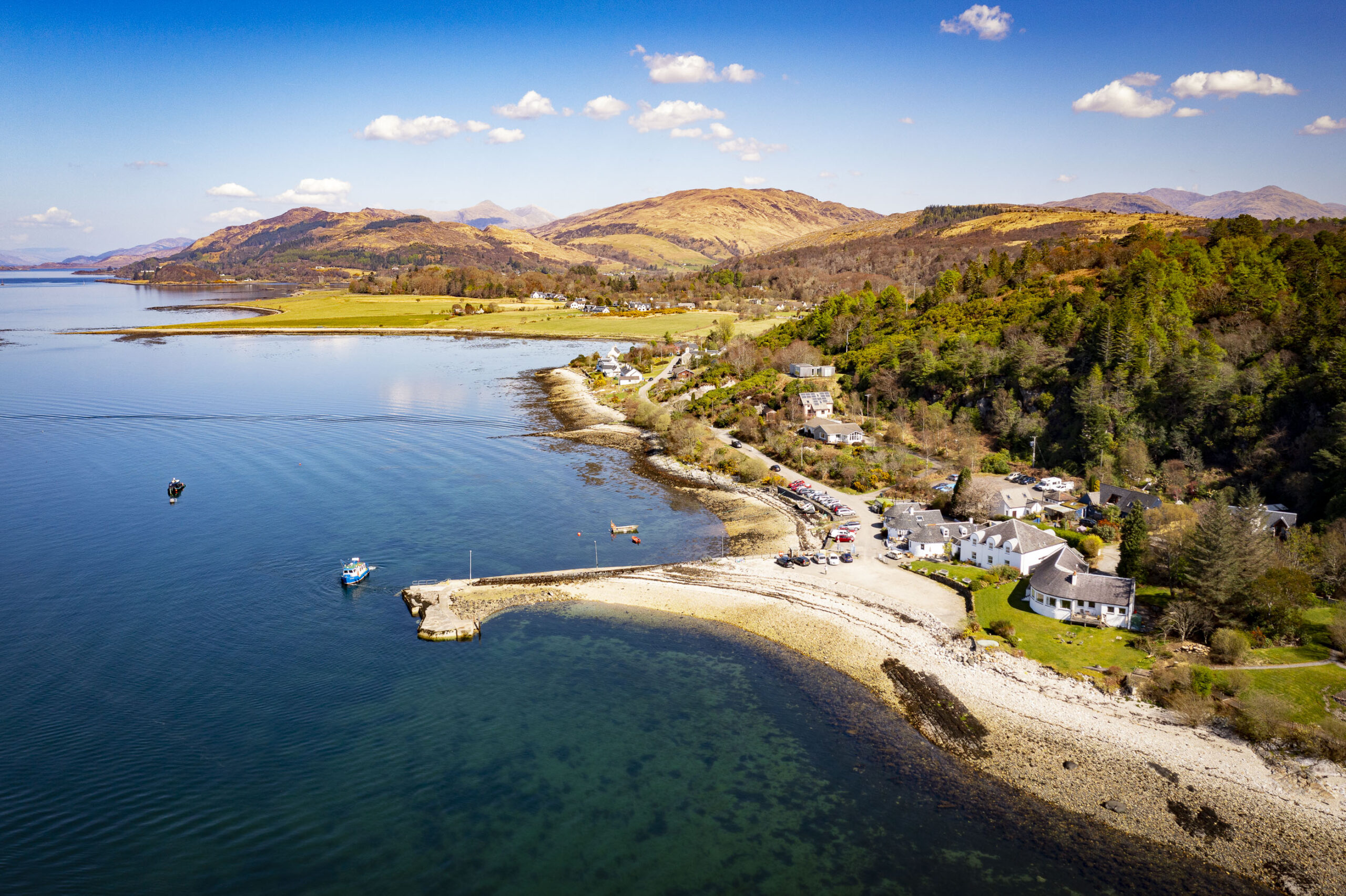
In between crossings, the crew of the Caledonian MacBrayne “Clansman of Glasgow” ferry swabbed the decks.
On land, a few yards away, in the fresh and bitingly raw wind, the Chinese flag flapped above “The Original Green Seafood Shack”.
On the quayside of the “Seafood Capital of Scotland”, Iona Robertson, Shauna Mackenzie, Maya Al-Hosani, “Skipper” Fiona Dow, Corrina Macneil, Marion Ritchie, Jacob Barnsley and Andrew Brown got on with their jobs – tubbing up hand-raked cockles from Benderloch, weighing lobsters from the Firth of Lorn, cracking and dressing crab, shucking Creran oysters, boiling up mussels and de-tailing creel-caught langoustines landed that morning by “Gordon the Prawn” from the “Ocean Star”.
Next door, in “The Fish Shop” at D. Watt & Son and -at a hundred years old- Oban’s oldest family business, Carol was artfully arranging her lemon and grey soles and seafood platters.
“We always have flags waving above the “Seafood Shack,” said Marion , fiancée of the Oban institution’s owner, ex-Scarborough trawlerman John Odgen.
Aka “Oggie John”.
“We put up flags when there’s a disaster. We raised one to recognise the Greek economy crisis and Greeks visiting town saw it and came to see us. We’ve flags from everywhere. For all occasions. It’s not just good for trade but it shows solidarity.
“We’ve many Chinese and Japanese visitors who love Scottish seafood fayre at fair prices.
“They get off their tour buses, eat and get back on again. Stuffed! We don’t sell to restaurants. Only blow ins! There’s always a queue all day. In season. From March to November.”
The green hut, on the site of an old baiting shed where fishermen made and mended their lines, has its own smokery.
Andrew Brown has worked in the Shack for years. “People forget it takes two days at least to make a proper salmon sandwich. It has to be smoked for eight hours.”
He loves his job. Although he’s allergic to crab.
Down the west coast of Scotland , the fresh seafood trade is one extended family with the Shack being fed throughout the season by “Girl Norma”, “Hughie Macleod”, Peter Banham, John Bayton, “Cruicky” , “The Oyster Lady” Judith Vjak of the “Caledonian Oyster Co.”, Eric Groat and John McCallister.
Behind the Shack is “ The Waterfront Fish Restaurant”, on the site of the old Fishermen’s Mission. On the menu are Isle of Mull scallops, Korean style east coast squid, Scrabster cod and Greek sea bass as well as octopus salad, crab rillettes and local smoked haddock fillet served with bacon and spinach mash.
“The only way to eat Gordon the Prawn’s langoustines is fresh with homemade mayonnaise. For perfection they should be boiled in seawater,” says manager Alex Needham who also runs “Cuan Mor” ( “The Atlantic Ocean”) on the Esplanade. He is a trained chef and haggis judge, presiding at Oban’s winter Haggis-Fest.
The city’s North Pier boasts the Macleod’s family restaurant “Ee-usk” ( Gaelic phonetic for “fish”) selling local sea fare – Neil Macqueen’s crabs, Toastie’s scallops, Jack’s mussels , farmed halibut from Gigha and Gordon Lamb’s langoustines.
Scotland’s West Coast Adventure Trail is also now a gastronomic adventure trail. Close to Oban are the award-winning Eriska Hotel, the Loch Melfort Hotel’s Asknish Restaurant at Arduaine and “The Pierhouse Restaurant” , in the old piermaster’s house at Port Appin on Loch Linnhe which used to be a stop for the steamer “puffer” ferries from Oban to Fort William. Latvian head chef Sergeus Saviakis offers rope-grown sea loch mussels and Loch Fyne salmon cured in sugar and sea salt and smoked in Inverawe over oak shavings from “retired” whisky casks.
The Grill Room at the Oban Bay Hotel, part of the Crera Hotels group which includes the Glencoe Inn, Forhab Castle and the Balmoral Arms, offers Isle of Harris langoustine, locally caught lobster and Loch Awe smoke salmon.
Oban has sixty restaurants and two cathedrals. St John’s (1864-1910) has a St Bees stone pulpit and a lifebelt. It comes from HMS Jason which hit an enemy mine off Coll in the First World War. The crew worshipped at St John’s.
St Colomb’s was first built out of corrugated iron in 1878 and rebuilt in neo-Gothic style in 1932. Its bells – Kenneth and Brendan- were first rung in 1959. They are named after a bishop of Argyll who commissioned them and one or both Brendans who accompanied St Colomba as Celtic missionairies. Pink and blue granite are used throughout making the Cathedral “a tangible symbol of the sturdiness of the tradition of the faith of the people of the West Highlands and islands of Scotland.”
Oban is also a university town. SAMS ( Scottish Association For Marine Sciences) is part of the University of the Highland and Islands, offering courses in marine science. aquaculture and physical oceanography.
Research is well under way looking at seaweed as a biofuel as well as food. One day planes could be powered by seaweed. The university has two seaweed farms. Off the island of Kerrera and at Port a Bhuiltin , which is the UK’s largest experimental seaweed farm. It grows kelps. There is also a hatchery which seeds about four kilometres of line. Red seaweed is thought to have enormous potential. There is a Scottish Seaweed Association. .
Seaweed is a greatly underestimated resource that provides food and shelter to marine life. It is also used as a food source for people – often referred to as a ‘superfood’ that is rich in iodine and calcium and contains natural antioxidants, minerals and amino acids. Seaweed is seen as an important source for future supply of food and feed (additives), pharmaceuticals, cosmetics, biomaterials and bioenergy.
Seaweed farming is a mature multi-billion dollar industry and some Asian countries produce tens of millions of tonnes a year. But although seaweed grows prolifically in Scottish waters, there is no seaweed farming industry to speak of in the UK. Yet.
Macroalgal cultivation specialist Dr Adrian Macleod whose family has a “Wigwam” and glamping pod business based in Perth works alongside deep sea ecologists, fisheries ecologists, resource economists, microbial bio-geochemists, translational ocean data analysts, readers in coastal ecosystems and phytoplankton experts.
Dr Macleod comments : “By the time I am sixty-five , a world population of 8 billion will need to be fed. As a marine scientist, I’m working to develop methods and technologies necessary for the large scale cultivation of seaweed and sea kelp for a range of industrial applications.”
SAMS is conducting research that would support an industry to develop: identifying the most advantageous species to farm, developing cultivation and harvesting techniques, exploring how to identify and control seaweed pathogens and the policies needed to manage such an industry. Current focus is on ultivation of Alaria esculenta, Saccharina latissima, Laminaria hyperborea, Palmaria palmata and Ulva.
SAMS Graduate Jacob Barnsley, 24 , from Worcester has a hands-on job working down on the quay at “Oggies”.
“The whole world seems to come to the Oban quayside and the shack to browse the locally landed catch of the day. That’s why we have a “handwash” sign translated in chalk into twenty-seven languages!”
Undergraduates regularly help out in “Norie’s” fish and chip stop in George Street. Owner Antonio Di Ciacca’s grandfather came over from Italy to Scotland in the 1950s. The sign outside celebrates “Three Generations of Frying Excellence.”
“My father once sold twenty stone of fish in one day!”
The city, which hosts two Highland Games in June and August, remains the undisputed “Seafood Capital of Scotland.” John Ogden came up with the idea and no one contested it.
“Before we were known as the gateway to the islands. Which gave the impression we were just a transit stop to get flights and ferries to Islay, Mull and the lesser known inner Hebridean islands like the Slate islands”, home of the World Stone Skimming Championships.
Oban , however, is far more than a place to play “ducks and drakes “ and just pass through en route to exploring the islands of Argyll and Bute.
Oban best reflects the philosophy encapsulated by the Gaelic, “Nach Urramuch an Cuan”( “How worthy is the work of the sea”).
It’s also the place to learn the traditional Scottish art of undressing a langoustine. “Pinch! Press! Squeeze and pull!”
“The Seafood Shack” has made the Cal-Mac ferryport a gastro destination.
“We breed them healthy and hardy here,” says Marion.
“We like to see a man weighed down with mussels coming our way.
“When the boys have no mussels on them, we send them out in a boat to sea.”
“The Shack” has celebrity customers. Adds Marion : “Lionel Messi and his chef came one day to try out our food and choose from the counter.
“John didn’t recognize him and when the chef said he worked for little Messi, John – who is a wee bit deaf- replied, “Aye, in my work I get a bit messy too.”

